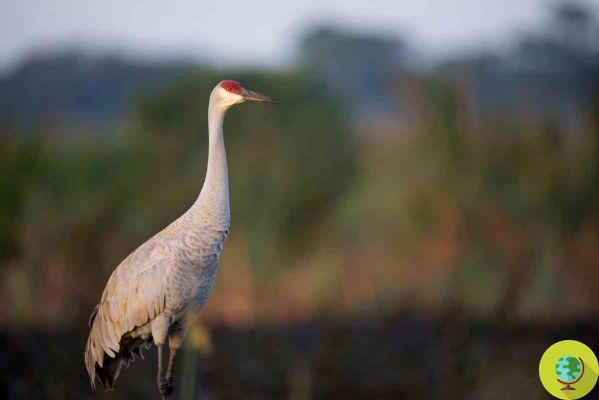
A new report on bird populations around the world shows how their decline is the most obvious manifestation of the global climate crisis and how alarmed we should be to see fewer and fewer birds in flight and to hear their song more rarely
We are fully in the phase of the sixth mass extinction and, by the time researchers and scholars from every field sound the alarm about the inestimable loss of our planet's biodiversity, humans are making animals and plants disappear at an impressive rate 1000 times. higher than the natural rate.
Unfortunately, no species can be defined as safe from this process, much less the more than 11.000 birds known to the world, essential for our planet because they disperse, for example, the seeds of plants, allowing their propagation.
Of these 11.000, half of the populations have dropped significantly over the years due to climate change, but also due to the destruction of their ecosystems, the presence of alien species, as well as intensive and often illegal hunting. Not surprisingly, their disappearance is a warning, compared to the canaries used in coal mines.
In Europe alone, millions of birds have disappeared in recent decades, many of them included in the IUCN Red List. This was revealed by a review on avian biodiversity published just recently in the Annual Review of Environment and Resources.
The overview, presented by a team of international researchers, shows that 48% of the world's bird species have been affected by a sharp demographic decline, for 39% there would have been no significant changes in the number of specimens, while 6% species would be on the rise. Question mark for the remaining 7%, given that not all countries of the globe have always made available their data on the conservation of local fauna.
According to the report's estimates, the most affected populations would be those of more or less large size such as cranes, albatrosses and parrots since these species would take longer to reproduce. In every country in the world there is also at least one species of birds in danger of extinction.
Many of the declining populations are found in tropical areas, in rainforests, particularly affected by deforestation and human activities. For these there is no need for detailed calculations to hypothesize a decline.
The only voice out of the chorus, if we look at the individual states analyzed, is North America where bird populations have increased by 13% compared to 1970. However, a very small exception remains.
Lack of progress in bird conservation usually reflects a lack of resources or political will, rather than a lack of knowledge of what needs to be done,
as the study authors point out, concluding their thorough review.
Fonte: Annual Review of Environment and Resources,
Follow us on Telegram | Instagram | Facebook | TikTok | Youtube
Read also:
- Over the past 50 years, hundreds of bird species have become extinct (and it's our fault)
- One million species are threatened with extinction (and world leaders are watching)
- These puzzles contain as many pieces as there are individuals of endangered species in the world


























